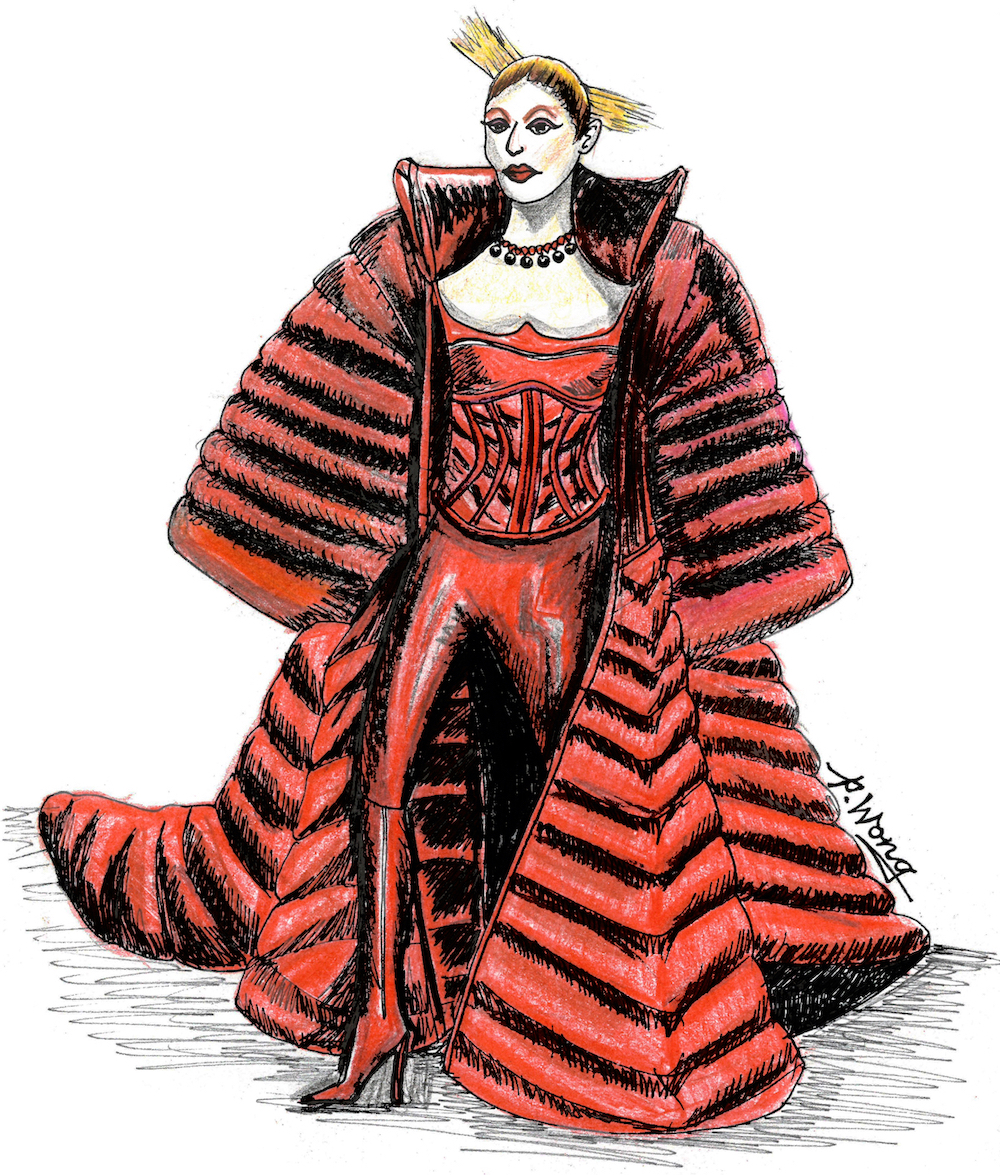Artwork by Pauline Wong
Written by Cleo Robins
The first Monday in May is known to many as the auspicious date of the annual Met Ball, an event which would otherwise be largely ignored by the media and general population alike if not for the attendance of dozens of the celebrities du jour. While the gala is ostensibly a fundraiser for the Metropolitan Museum of Art, it has evolved into something much larger – a symbol of the tragic ironies and contradictions of celebrity culture.
The grandest irony of all is the idea that the Met Museum needs to be fundraised at all. The gallery is currently the largest art museum in the Western hemisphere and has seventeen departments dedicated to a myriad of prestigious artistic and historical artefacts. Of course, one could argue that as such a large museum, the Met needs an equally large fundraiser to generate enough money to support its upkeep. However, this line of thinking comes unstuck when you consider that many of the celebrities and “its guests” who attend the ball do not actually have to pay for tickets, begging the question of why a sausage sizzle didn’t suffice. With its cultural and financial position largely stable from year to year, the Met needs the Met Gala not for essential revenue but for the construction of an aura that makes its imposing position at the top of the cultural hierarchy almost impossible to destroy.
This construction of a prestigious reputation recalls regimes and rulers of the past who used spectacle and myth to solidify their power and subdue their people. Looking at it historically, the Met Gala functions in some ways as a contemporary iteration of bygone events like gladiatorial games and royal weddings. Like those events, the Met Ball rivets an audience of hundreds of thousands (maybe millions) who look on with a mixture of jealousy, admiration, disgust, delight, and guilt, as obscenely rich people walk up the steps of an obscenely rich institution under the guise of making this institution even more obscenely rich. The Met Gala’s primary concern is not only the reiteration of the Met’s position as a symbol of power, but also, the consolidation of the desirability of celebrities, who continue to have firm desirability to us, “the masses”.
So why, after all the events of the past few years, are we still so obsessed? The 2021 Met Gala was a lightning rod for controversy, with several people being arrested after staging a peaceful Black Lives Matter protest outside the venue. The protestors sought to bring attention to the massive amount of funding that goes to the NYPD, and the images of protest leaders being escorted away from the red carpet by police brought home how out of touch and ultimately dystopian the whole event is. To put the cherry on top, Alexandria Ocasio-Cortez, a politician and activist, who represents New York in the US Congress, made her Met Gala debut with a dress that read “Tax the Rich”. While many applauded Ocasio-Cortez’s succinct symbolic takedown of all the attendees around her, others criticised the dress as a prime piece of performative activism.
The 2021 Met Gala’s controversial run hasn’t stopped this year’s event from being a success. We continue to watch, dissect, and discuss the different looks from various avant-garde fashion houses, and critique the comportment and lengthy preparation of the individual celebrities. Perhaps the Met Ball appeals as an aspirational symbol of the myth of capitalism; work hard, and one day you’ll be there on the steps in your own fancy get-up. Maybe it is just a great form of escapism, another distraction from work or study or anything in the oh-so-boring real world. I think that the Met Gala is a combination of both these things, and also a reminder that the power of celebrities derives not from their wealth or talent but from our inability, or even refusal, to look away.

